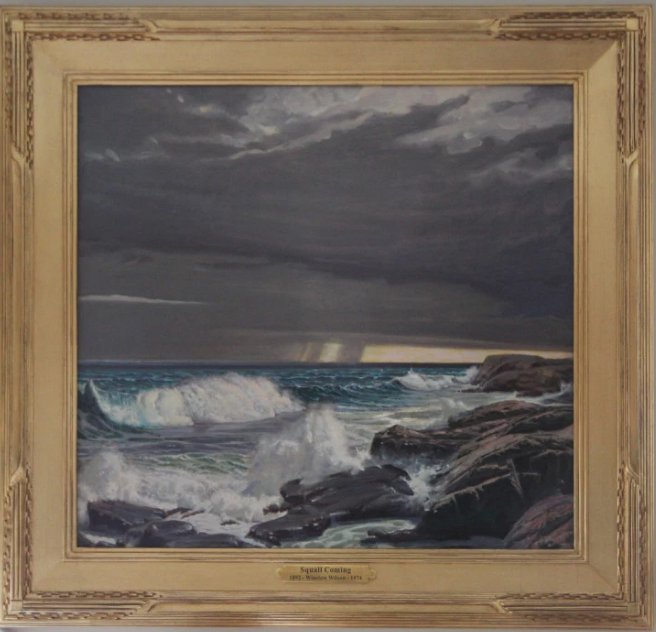
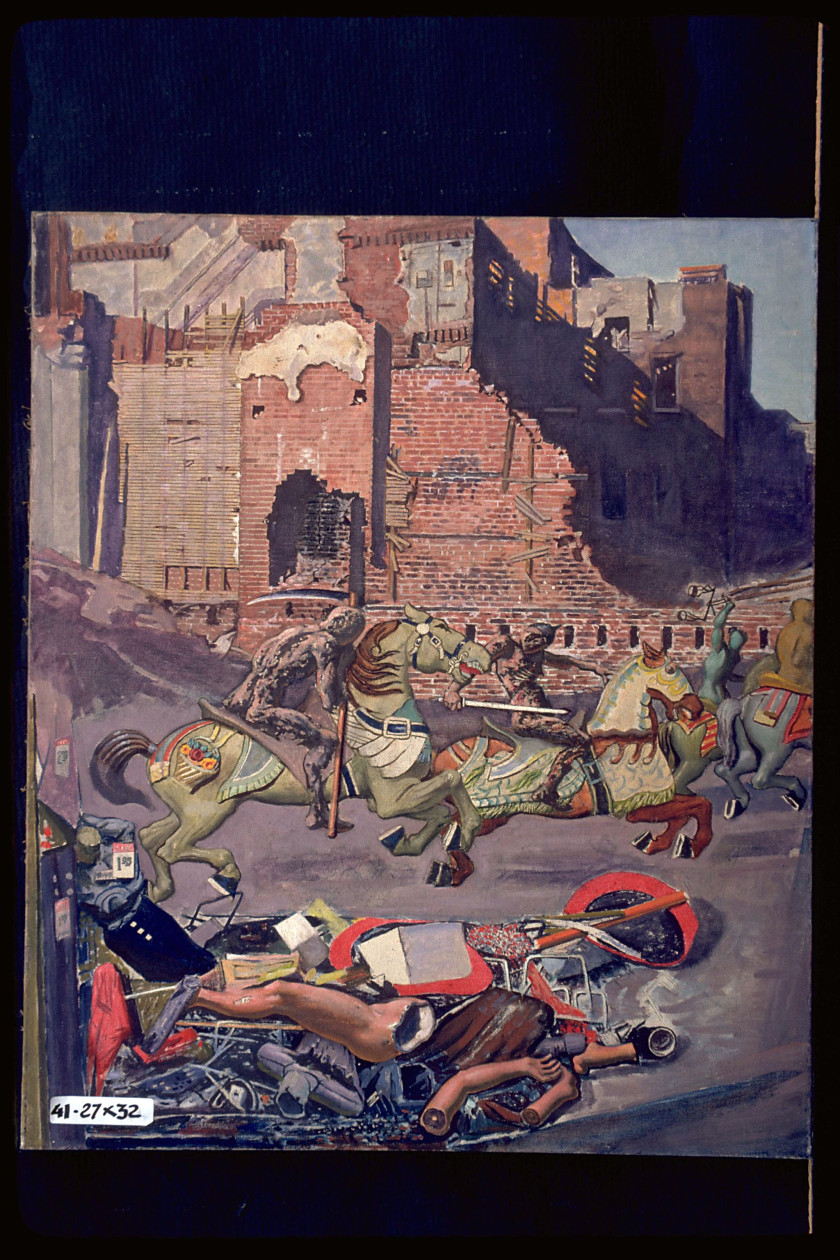
Granddaughter Claudia Wilson-Howard writes Good Morning Gloucester seeking any information, biographical “tidbits”, or recollections about fine artist Winslow Wilson who resided in Gloucester and had studios in Gloucester and Rockport ca. 1946-1972.She is working on an excellent project: a digital resource about her grandfather.
“I am the granddaughter of Winslow Wilson,” she writes, “an artist who spent most of his life on Cape Ann, painting under two names in two studios. One studio, in Gloucester, the second in Rockport, and a member of the Rockport Art Association from 1946-1972, he was an active member of the art community. I have developed a website (www.winslowwilson.com), which is a work in progress. I am attempting to develop as detailed a biography as possible, and was hoping …to reach out to the community to help gather any tidbit of information. Thank you very much!”
Perhaps a reader of this blog can help identify a sitter in one of Wilson’s stellar unidentified local portraits.
Review, © C. Ryan
Arthur William “Winslow” “Tex” Wilson, also known as Pico Miran was an American artist–primarily a painter– born on July 20, 1892 in Brady, Texas. His family moved to Junction, TX, where he graduated from high school, also the address he used while attending Harvard. Wilson was a veteran of the First World War (National Guard, AEF) deployed to France 1918-1919. He died November 18, 1974 in Miami, FLA.
At Harvard
Wilson transferred from Texas A&M University to Harvard. Roy Follett his professor at Texas A&M described Wilson’s impact on him as “atomic”, possessed with a creative intellect that surpassed the teacher’s. And then the unthinkable…
For Wilson, life changed punishingly July 4, 1912 as he accidentally and horrifically killed his fellow undergrad, a friend and co-worker Merle DeWitt Britten on the job, driving the streetcar that crushed him. Wilson left Harvard, then came back. He skipped classes. At times he soared. He was a writer and editor of The Harvard Monthly literary magazine with an impressive group of multi talented peers and friends: ee cummings; John Dos Passos; critic Gilbert Seldes; poet (Pulitzer prize winner) Robert Hillyer; poet (later Director MA Historical Society) R. Stewart Mitchell; Scofield Thayer*; and James Sibley Watson*.
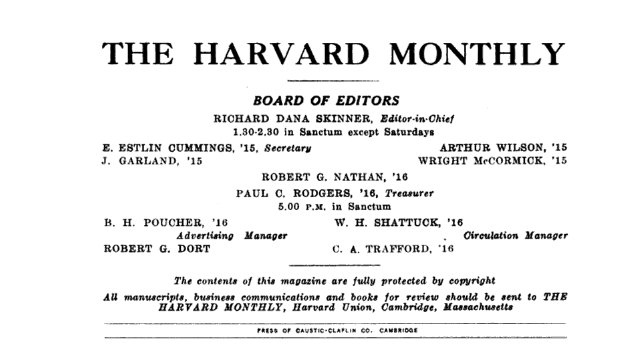
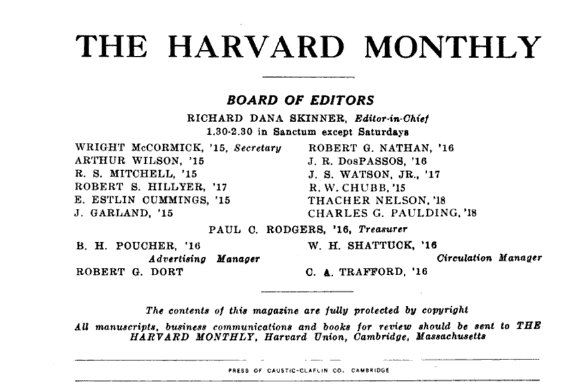
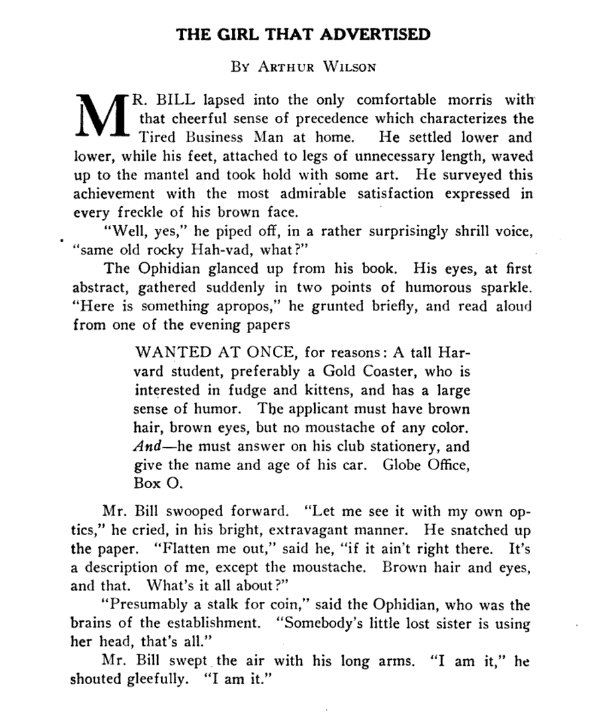
The Harvard Monthly was founded in 1885 and ceased publication in 1917, its aim “to publish the best (undergraduate) articles, fiction and verse by students in the University.” The words “and verse” were added after E.E. Cummings gave their class commencement speech in 1915 on “The New Art” extolling contemporary expressions in music, the visual arts, and literature. “What really brought down the house was Gertrude Stein’s Tender Buttons,” he’d later say about this bit in the speech:
“unquestionably a proof of great imagination on the part of the authoress, as anyone who tries to imitate her work will discover for himself. Here we see traces of realism, similar to those which made the “Nude Descending a Staircase” so baffling. As far as these “Tender Buttons” are concerned, the sum and substance of criticism is impossible. The unparalleled familiarity of the medium precludes its use for the purpose of aesthetic effect. And here, in their logical conclusion, impressionistic tendencies are reduced to absurdity. The question now arises, how much of all this is really Art? The answer is: we do not know. The great men of the future will most certainly profit by the experimentation of the present period. An insight into the unbroken chain of artistic development during the last half century disproves the theory that modernism is without foundation; rather we are concerned with a natural unfolding of sound tendencies. That the conclusion is, in a particular case, absurdity, does not in any way impair the value of the experiment, so long as we are dealing with sincere effort. The New Art, maligned though it may be by fakirs and fanatics, will appear in its essential spirit to the unprejudiced critic as a courageous and genuine exploration of untrodden ways…how much of all this is really Art? The answer is: we do not know. The great men of the future will most certainly profit by the experimentation of the present period.” – ee cummings 1915

*The Dial was founded by James Sibley Watson and Scofield Thayer. Emily Sibley Watson, Founder of Memorial Art Gallery in Rochester was friends with Marianne Moore
1917 NYC apartment with Cummings
Wilson and e.e. cummings (1884-1962) were roommates at Harvard, friends who hit the town. (There’s one story with them caught at a prostitute’s apartment.) They remained friends enough to room together more and carouse Greenwich Village. Thanks to $1000 from Thayer, Cummings joined Wilson in New York at 21 East 15th Street in 1917.
There are striking parallels, comparisons, and secrets in the lives they led. Both men were artists and writers that had tragic and shattering life experiences, and estranged and scandalous family stories.
According to Virginia Spencer Carr‘s 1984 biography of John Dos Passos, Dos Passos envied these two: “Wilson was already signing his paintings (when he signed them at all) “Winslow Wilson” and Dos Passos surmised (when?) that he would be recognized eventually for his stunning portraits and seascapes. He was convinced that Cummings was too assured a reputation as a painter and saw Dudley Poore as the best poet of the lot from Harvard who aspired to a career in letters.”
All three enlisted in WW1. Cummings signed up for the volunteer ambulance corp along with Harvard chums Hillyer and Dos Passos. Cummings ended up a POW and wrote a novel about the experience, The Enormous Room. Cummings said he was a self-taught painter, helped along by friends from Harvard. Did he sign up for classes in New York? Where did Wilson study art in New York before WW1?
(Incidentally, Gertrude Stein was also a volunteer camion; it seems like a ‘who wasn’t?’ roster. The majority of the 3500+ drivers came from ivy league schools, especially Harvard. The American Field Service (AFS) ambulance unit grew to be the largest and was founded by Gloucester’s own A. Piatt Andrew in 1915, after helping out the year before.)
1920s
After the War, Wilson was in New York and abroad in Paris, and London (infamously). There was a blink of a marriage and divorce from Elizabeth Brice, and a daughter Caroline, a dancer, that he never saw again. At 34, Wilson and his 19 year old girlfriend Winifred Brown abandoned a baby. It was an international scandal. Wilson’s family stepped up and his brother Ernest raised the boy as his own. It was four decades before the baby learned about his biological parents. I know these wincing details because that boy, H Robert Wilson, is a good writer and did the research.
Arthur Wilson signed his paintings as “Winslow” Wilson, which fits as a wink at Homer. Seascapes as a subject. Private solitary life. It also works as a visual swapping out of “Tex” for East Coast “Winslow”. The initials become double letters (like e.e. cummings), and nearly a double name, minus one letter and there’s an anagram of Wilson. It’s even a way to differentiate his name ‘Arthur Wilson’ from other artists and writers with the same name(s), initials (AW or the comic Aww), and friends. Winslow Wilson is decidedly not Edmund Wilson (though like many writers he credits “nearly everything” about his sources of style as a painter to him), artist Edward Arthur Wilson, artist Arthur Wilson (UK), artist Arthur Wilson (LA), artist Edward Adrian Wilson, to name a few.
Mostly, Wilson using “Winslow” seems a deliberate break from his traumatic past: living with the death of his friend, letting his family down, fighting in WW1, divorce, scandal, family secrets, and that difficult ee cummings portrait poem about him.
ca. 1922 ee cummings poem ‘Arthur Wilson’
E.E. Cummings poem “Three Portraits” (I. Pianist II. Caritas III. Arthur Wilson) is published in the modernist magazine the Broom: An International Magazine of the Arts, Volume 2, Number 4, July 1922. Founded and backed not nearly enough by Harold Loeb and Alfred Kreymborg, the Broom publication was a short lived (1921-24) modernist monthly featuring “unknown, path-breaking” writers and artists (reproductions, original designs, translations). The cummings poem ‘Arthur Wilson’ was illustrated with woodcuts by Ladislaw Medgyes. The issue’s cover design was by Fernard Leger;

Picasso, Modigliani and William Gropper drawings were reproduced inside.
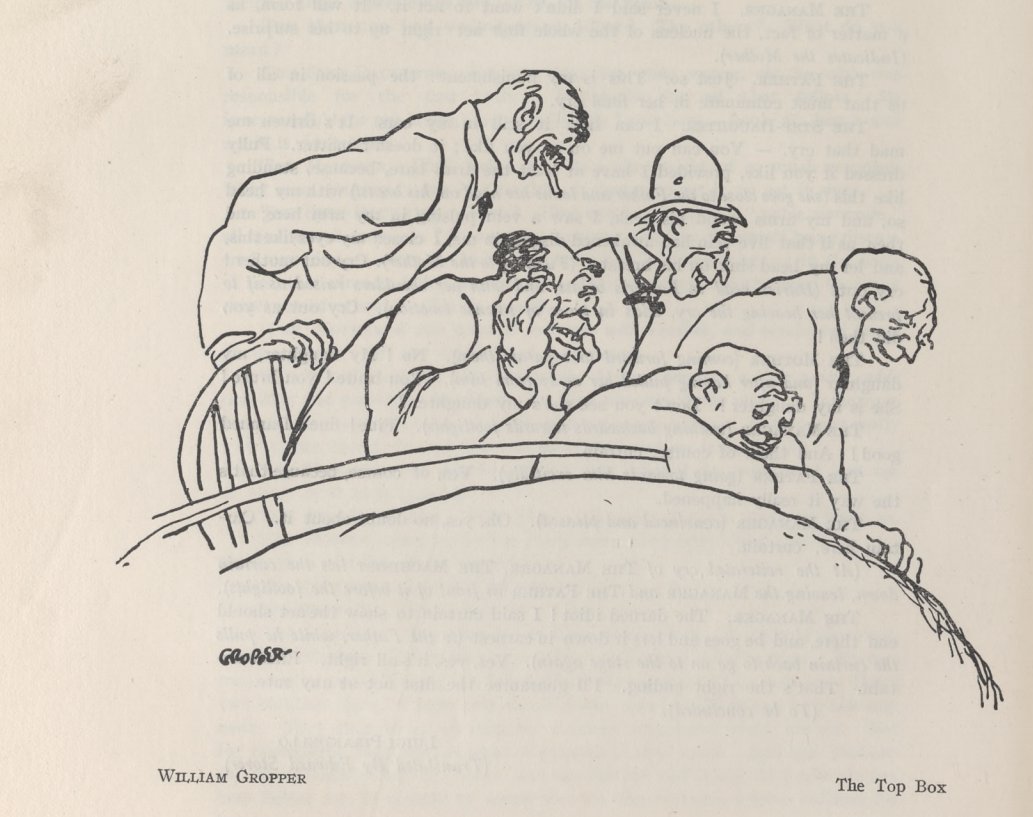
The text for III. Arthur Wilson follows (refer to the image for the visual spatial break in cummings prose).
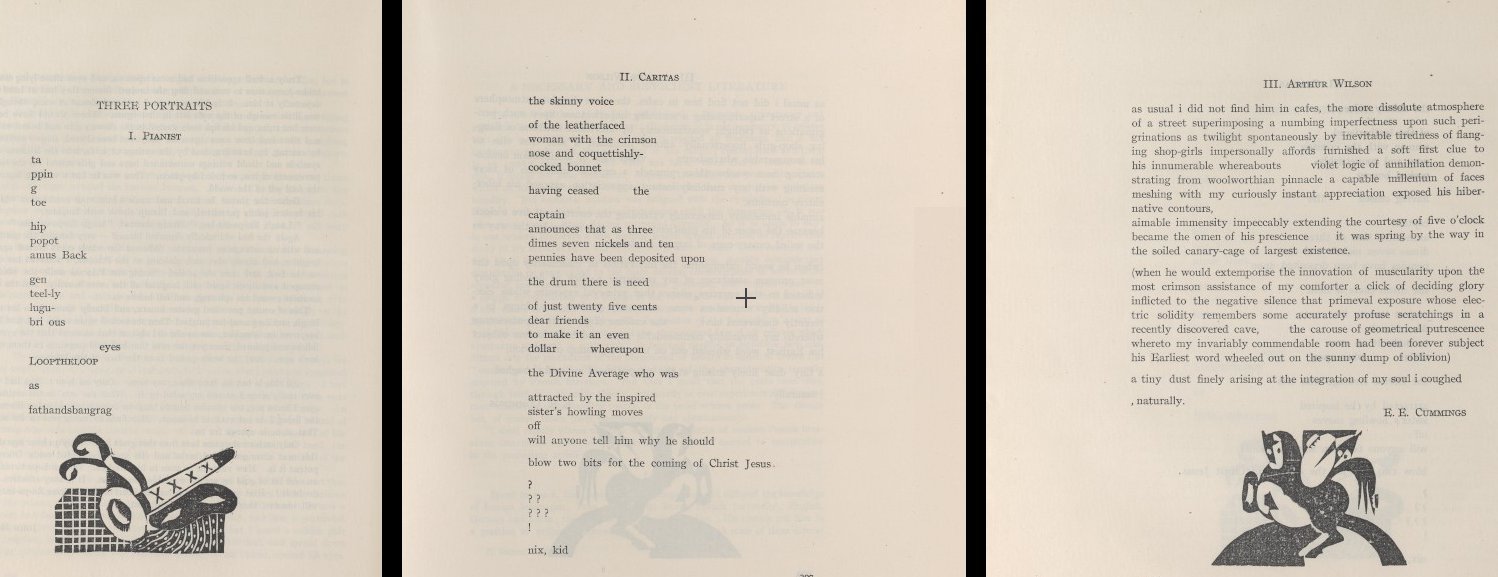
III. Arthur Wilson
as usual i did not find him in cafes, the more dissolute atmosphere
of a street superimposing a numbing imperfectness upon such peri-
grinations as twilight spontaneously by inevitable tiredness of flang-
ing shop-girls impersonally affords furnished a soft first clue to
his innumerable whereabouts violet logic of annihilation demon-
strating from woolworthian pinnacle a capable millenium of faces
meshing with my curiously instant appreciation exposed his hiber-
native contours,
aimable immensity impeccably extending the courtesy of five o’clock
became the omen of his prescience it was spring by the way
in the soiled canary-cage of largest existence.
(when he would extemporise the innovation of muscularity upon the
most crimson assistance of my comforter a click of deciding glory
inflicted to the negative silence that primeval exposure whose elec-
tric solidity remembers some accurately profuse scratchings in a
recently discovered cave, the carouse of geometrical putrescence
whereto my invariably commendable room had been forever subject
his Earliest word wheeled out on the sunny dump of oblivion)
a tiny dust finely arising at the integration of my soul i coughed
, naturally.
-E.E. Cummings
Like The Harvard Monthly and The Dial, Broom contributors were or would become recognized luminaries: Sherwood Anderson, Guillaume Apollinaire, Hans Arp, Conrad Aiken, Kenneth Burke, Robert M Coates, Jean Cocteau, Malcolm Cowley, Hart Crane, Adolph Dehn, Andre Derain, Raoul Dufy, Paul Eldridge, T S Eliot, Wanda Gag, Robert Graves, Juan Gris, William Gropper, George Grosz, Rockwell Kent, Paul Klee, Fernand Leger, Lipchitz, El Lissitzky, Amy Lowell, Louis Lozowick, Marianne Moore, Henri Matisse, Amedeo Mondigliani, Laszlo Moholy-Nagy, Pablo Picasso, Man Ray, ‘Charles Sheeler, Gertrude Stein, Joseph Stella, Wallace Stevens, Paul Strand, Max Weber, William Carlos Williams, and Virginia Woolf among other artists and writers.
It was a small world and circle. The Broom contributors likely read that ee cummings poem about Wilson, and several knew both men. Names carried over from the Harvard-Dial network (Amy Lowell, Marianne Moore).
EE Cummings published Part III in later editions by the title “as usual I did not find him in cafes” omitting Arthur Wilson’s name.
1924 e.e. cummings visits Gloucester
to see writer, friend and editor R. Stewart Mitchell (1892-1957) who had a home here. Stewart Mitchell was another Harvard alumni (1915) and former Harvard Monthly editor. His face inspired the nickname “The Great Auk”. How nice being friends with artist-writers.

After serving in WW1, Mitchell was a managing editor and regular contributor for The Dial from 1919-21, then published poet. From 1928-1937 he was Managing Editor of the New England Quarterly journal, and from 1929- 57 an editor and Director of the Massachusetts Historical Society. On the Ma Historical Society seal : “It would hardly have done to compare the members of the Society to oxen, sheep, or birds … but bees had always had a good reputation for the sweetness and light of their honey and their wax. “– 1949 Stewart Mitchell
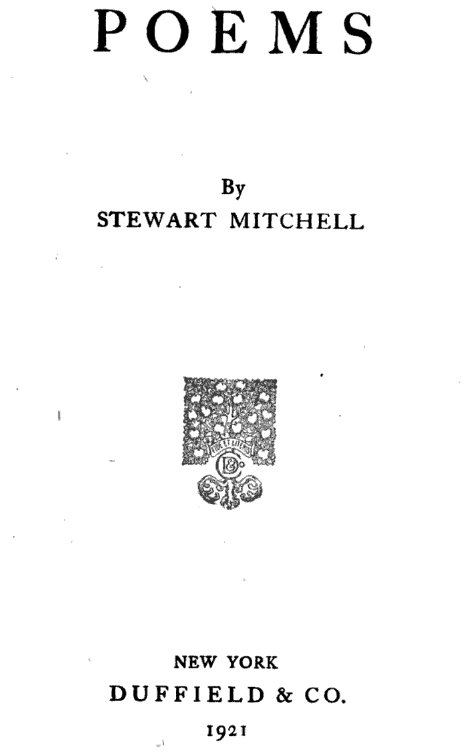
Did Cummings and Arthur W. Wilson come to Gloucester while attending Harvard or at other times in the 1920s to see Stewart? Was Cummings in Gloucester other years, decades? Did Wilson and Mitchell re-connect in Gloucester? John Sloan’s etching Frankie and Johnnie illustrates EE Cummings’ play HIM. Did Wilson interact with Stuart Davis in Gloucester or New York?
(Aside: In 1984 the play ViVa Cummings! opened in Gloucester under the direction of William Finlay and the New Stillington Players. Did they know Cummings had been here…)
1935
Wilson fails to update his Harvard alumni association requests. Here’s the 1935 entry:

1951 ELEANOR ROOSEVELT VISITS EXHIBIT AT AAA, NYC
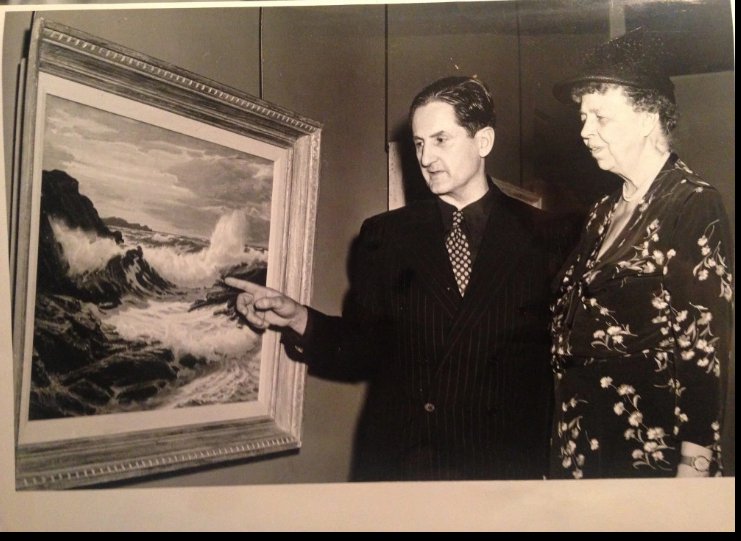
Wilson’s painting from the 1951 Contemporary American Artists exhibition at the Associated American Artists won the people’s choice award, and his solo exhibit in June was attended and written about by Eleanor Roosevelt in her nationally syndicated MY DAY column:
HYDE PARK, Sunday—At lunch last Friday I had a visit from Mr. Tatsukichiro Horikawa, who is over here from Japan on a trip studying the World Federation movement in different countries. He has visited Switzerland, Germany, France and England, as well as the United States, and he came to see me before in New York City; but he wishes particularly to come up to Hyde Park and place some flowers on my husband’s grave.
I was especially interested in talking to him because, like so many of the World Federalists, he felt that the United Nations was very inadequate. He felt one must bring about more unity—and particularly, if we were going to have any settlements in the Far East, there must be unity between Great Britain and the United States as well as the other nations in their policy.
I asked him if he did not think it was a good deal to expect to have a unified policy among 60 nations when the organization bringing them together had been in existence only six years. It seems to me it requires longer for people to understand how the other peoples think and feel. World federation might someday be possible, but not until people have had a greater length of time to find out about each other. One of the American World Federalist members had also written me saying that the federation must come first and then be followed by understanding. I think this begs the question of how you obtain the federation and how, having obtained it in name, you do anything practical with it.
In New York City on Thursday afternoon I went to see an exhibition of paintings of the sea done by Winslow Wilson, at the Associated American Artists Galleries on Fifth Avenue. This exhibition was arranged under the auspices of Greenwich House, toward whose support a portion of the proceeds of any sale will go.
Mr. Wilson told me he did not paint actually from a scene he was looking at, but from memory. He said he particularly liked to use the sea because it was to him a symbol of the stress and strife we were all going through at present; and still it had a kind of discipline and control which was what most human beings were striving for today and finding difficult of achievement. I found some of his paintings quite beautiful, and reminiscent of many seacoasts I have known. In certain ones the light made one think of tropical climates; in others the shores of Maine seemed to stand out. More often the sky and the sea were stormy, but the light was nearly always breaking through. Let us hope that out of this turbulent period of history the light will break through for all human beings.
The other day I was sent a little pamphlet written by Eloise R. Griffith on the national anthems and their origin. I think this will be of interest to a great many people who want to know a little more than the mere words of the songs which we hear sung so often.” – Eleanor Roosevelt
I am thunderstruck reading a portion of sales would benefit Greenwich House. Talk about an undercurrent.
1951 Post-Modern Manifesto in the same year as the AAA seascapes
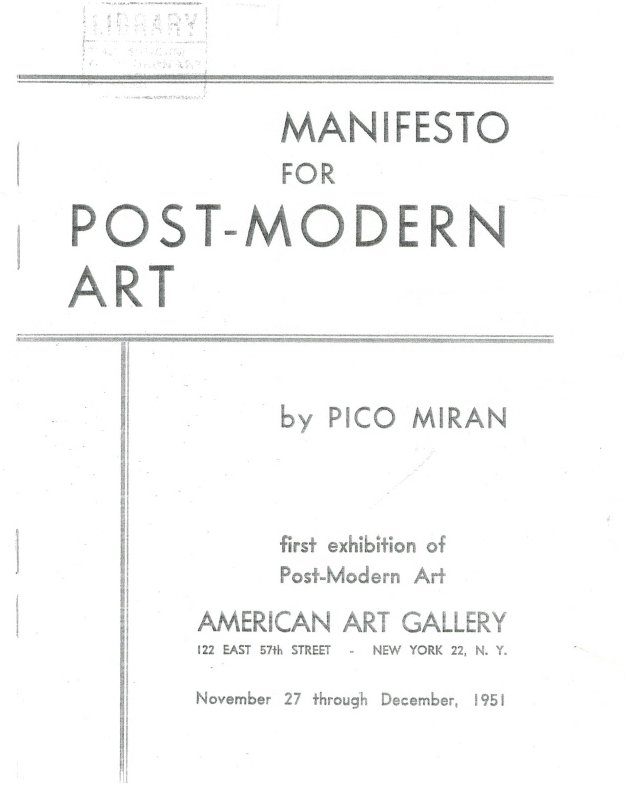
“A complete study of Cummings should take penetrating account of his painting and drawing. And no estimate of his literary work can begin without noting the important fact that Cummings is a painter.”
That’s the opener for Syrinx., a critique of Cummings by Gorham B. Munson published in Secession July 1923.
“His first stimulus comes from the emotional and perceptive materials of his experience…Cummings has jabbed his pen into life, but he has also twisted it in the wound, and it is this twist of the pen that makes literature.”
Knowing ee cummings facility with visual arts transforms how his poems read. He identifies both pursuits. The press announcement for Cummings appointment at Harvard in 1952 affirmed that he resided in New York City, writing and painting since the year 1920. It wasn’t that he sculpted marks–‘scratchings’- that could be seen as pictures in print,–it’s this charge when visual art and writing advance toward or basically obliterate media boundaries.
After reading Wilson’s 1951 Manifesto For Post-Modern Art published under his pseudonym Pico Miran, I felt a similar tug. For Wilson, when it comes to ideas and individuality, words and paint –and as many names and identities to match– matter. Some of Wilson’s paintings could be shown alongside pages from ee cummings The Enormous Room.
There are takeaways and points one can make about this manifesto and painting series of Wilson. I can think of art I’d like to show together with this work.
Yikes, the thoughts about women! Here’s Wilson writing as Pico Miran in his Manifesto, emphasis on man apparently:
“But while he proposes to save the personal symbol, he must emphatically reject the conception of its privacy–a conception which he is compelled to regard as an effeminate misery: he cannot help thinking an almost unmanly exaggeration of the one bit of feminine make-up in every artist, here flouncing in absurd esthetic millinery, with coy desire for secretiveness, mysterious subjectivity, and vain feelings of cryptic superiority to the vulgar mass.”
1951 Hidden, not lost
Wilson evidently maintained some contacts; note the supportive reviews by friends (Moore, Burke, Wheelock) later reprinted for his 1957 solo exhibit at Vose Galleries in Boston. Edward Alden Jewel, the New York Times critic, described Wilson as “living a hidden life of pure dedication and drudgery” in his 1951 NYC AAA review.
2015 Found. A great teacher
On Cape Ann, Wilson taught figurative painting through the Rockport Art Association, which he joined in 1946. Wilson is recollected as a dazzling teacher who could bring out the best in his students. One student’s 2015 recollection is a must read: “Bing McGilvray of the Cape Ann Museum was fortunate to communicate with a local artist familiar with Wilson, Betty Lou Schlemm.” Wilson sounds like the famous and captivating professors at Harvard.
Another unforgettable piece about Wilson’s biography concerns a local exchange between Pico Miran and Peter Anastas following a 1954 review by the latter.
For local readers, the www.winslowwilson.com website helpfully provides some Gloucester addresses associated with Wilson.
- June 21, 1951: Bradford Building, 209 Main Room 208, Gloucester, MA
- August 1, 1951: Marine Basin, E. Gloucester, MA
- June 18, 1952: Bradford Building, 209 Main Room 208, Gloucester, MA
- July 26, 1955: Bradford Building, 209 Main Room 208, Gloucester, MA
- 1967 maybe 195 Main Street, Gloucester, MA
- 1969 maybe 195 Main Street, Gloucester, MA
- June 2, 1971: PO. Box 414, Gloucester, MA
Also:
21 Est 15th Street, 154 East 39th Street, Carnegie Hall, 3 Washington Square North in Greenwich Village, Woodstock, N.Y., and Lime Rock, CT.

Dear Catherine, Thank you very much for your fantastic research! Your insights are thought provoking. I have so much to think about, and look forward to speaking with you soon. Best regards, Claudia Wilson Howard
LikeLiked by 1 person
Claudia, dealing with estates is a tremendous, sensitive undertaking and daunting. Your family is so lucky to have you on it!
LikeLiked by 1 person
Marvelous post. I’ve learned so much. Thank you!
LikeLiked by 1 person
Very nice and great research too! Thanks for the history lesson and walk back! 🙂 Dave & Kim:-)
LikeLiked by 2 people
Great to learn more about the artistic connections of Gloucester with Harvard, New York, and world events! Thanks. karen
LikeLiked by 1 person